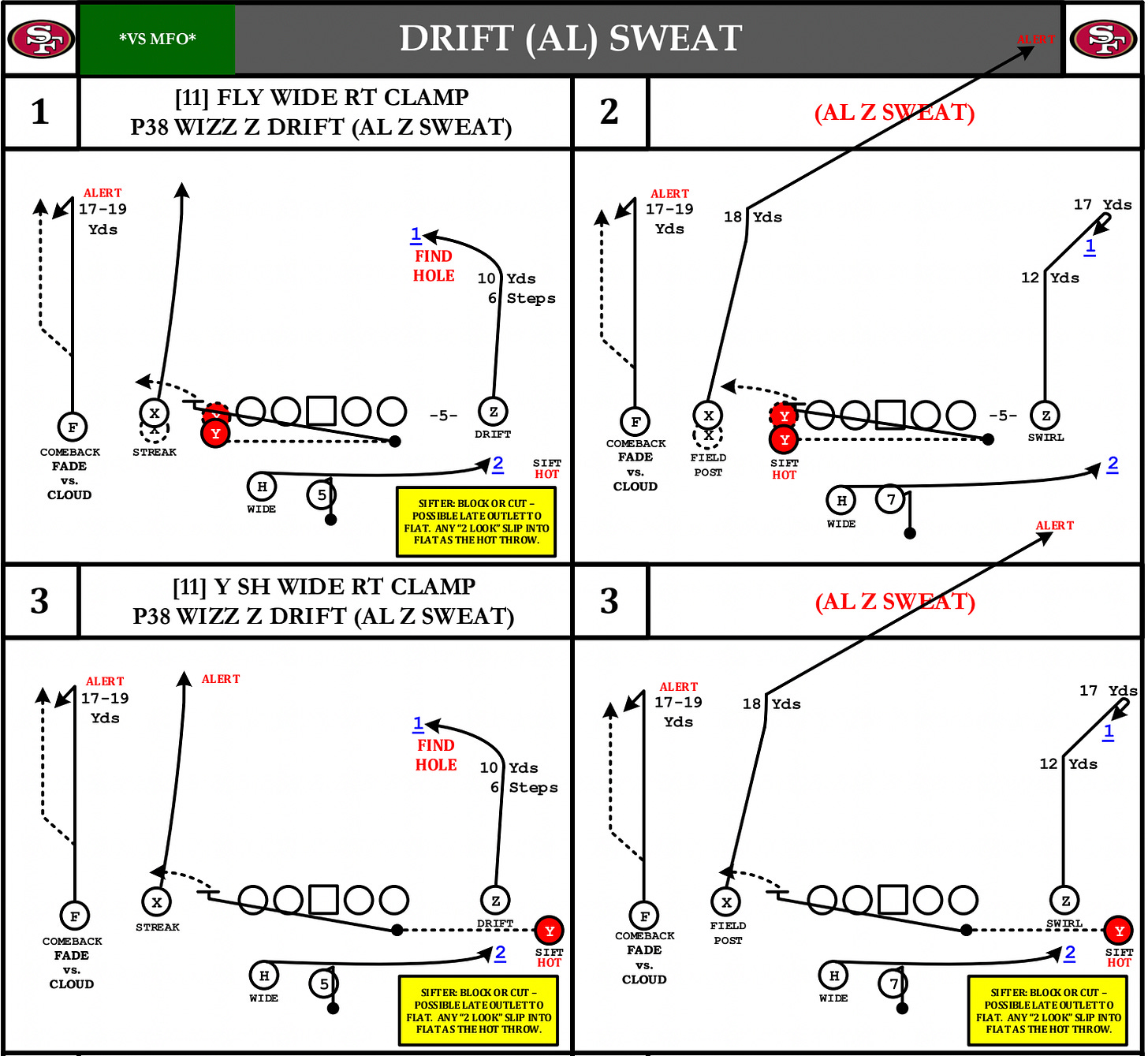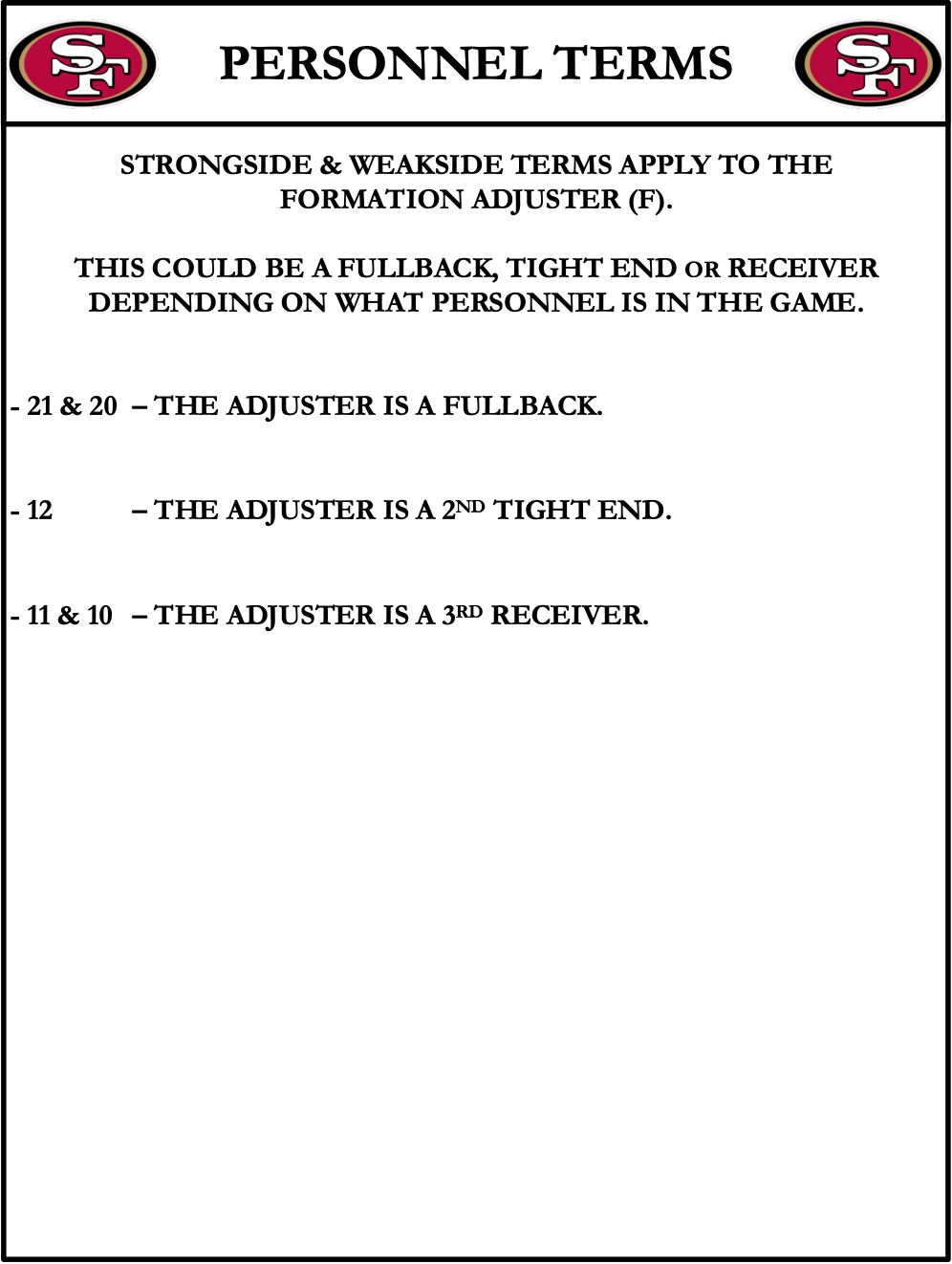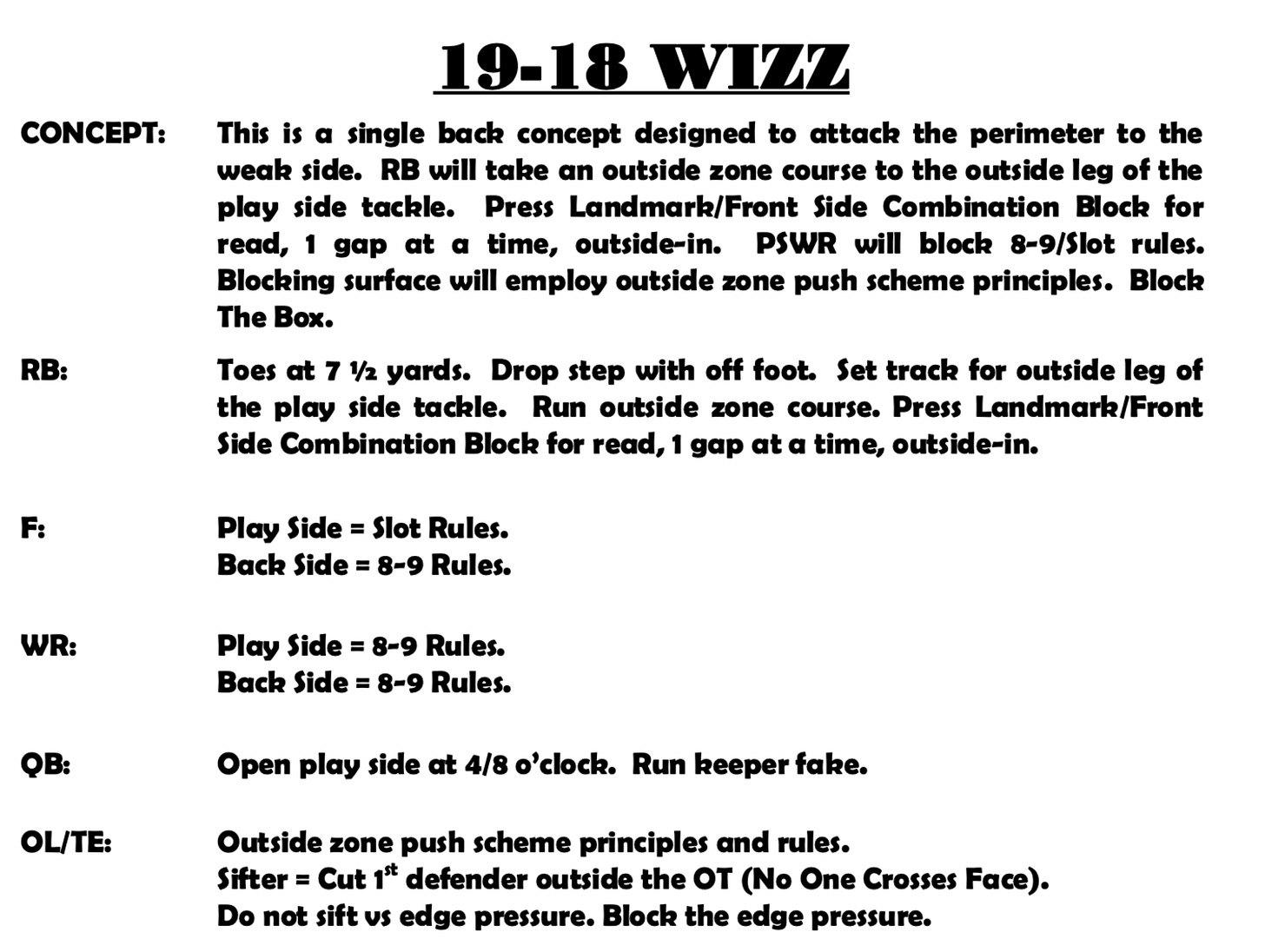West Coast Offense Jargon 101
Let's talk about how to understand a West Coast offense play call from the Mike McDaniel branches of the Kyle Shanahan tree.
ESPN’s Pablo Torre stirred up the muck this past week with a scathing take about NFL media. The assertion was clear: NFL content that oozes technical “jargon” and wordy vocabularies should be less welcomed by the masses.
“I hate this entire genre — of video, of person, of cultural trend. All we just heard was a bunch of jargon that 99 percent of the audience has no idea what it means at all…it just feels like a lot of people nodding at something that they think they should be impressed by as opposed to actually knowing what’s happening and we’re getting away from the actual premise of like, ‘Football players doing something on the field that is good…I just think we fetishize jargon.”
Tell us how you really feel, Pablo!
The commentary was spurred on by a viral clip from HBO’s Offseason Hard Knocks with the New York Giants. The clip, pulled from the Giants’ NFL Combine meeting with former North Carolina (and now New England Patriots) quarterback Drake Maye, showcases Maye quickly eating up the terminology of a play call from head coach Brian Daboll. Maye shows an understanding of the coding of the words and an understanding of the protection scheme the Giants’ scheme calls for the play.
“Gun Dolphin Right 72 Tundra Float H-Angle”
If you’re nodding your head to the tune of the jargon, you’re part of the problem!
I’ll be the first to confess that this kind of content makes my heart sing. But if I’m going to bring the kind of open-mindedness to this platform that I aspire each and every football content creator to have, I’m going to hear what Pablo Torre is saying and seek to understand how to make “jargon” like an offensive play-call less imposing to understand and easier to appreciate.
For what it’s worth, the Giants interview with Maye actually does the hard part, too — — it explains what each part of the Giants’ play-call actually means.
BD: “‘Tundra’ stands for what?”
DM: “Two under (routes).”
BD: “And what does float stand for?”
DM: “He’s got the corner or the out.”
BD: “Flag…we call it a flag.”
DM: “And H-angle (casually shrugs)”
BD: “…is an angle.”
DM: “Easy stuff!”’
Under routes are shallows. A “flag” route, as they work through, is essentially a corner route. And “H-angle” is coded for the H (halfback aka running back) to run an angle route out of the backfield.
This isn’t necessarily why the Hard Knocks clip was fun — it is an unprecedented level of access to the Holy Grail of the pre-draft process with two guys who are “matching each other’s freak.” That’s fun in and of itself. But having a deeper understanding of the “jargon” is the point Torre clarified he was calling for.
“The entire point of what I was trying to say when I was in this chair was that I like it when complicated things are explained to me… as someone who doesn’t have the depth of knowledge in a way that anyone can understand,” said Torre the following day.
This is all well and good. None of it has to do with the Miami Dolphins, though. The Dolphins did have their own fetishized football jargon content that went viral last summer, however. Do you remember Tua Tagovailoa giving the Dolphins’ media a play call to illustrate why Miami had some communication issues down the stretch?
“North Right Clamp South Fox H-Top Pass 38 Top Gumby XP Sweat”
Welcome to the world of Mike McDaniel.
The genius of McDaniel can be a blessing and a curse. Dolphins fans have experienced that first-hand through his first two seasons as the leading man in Miami. I, personally, think you’d be foolish to not accept the bad that comes with all the good the Dolphins have put on display as a team under McDaniel’s watch and I wholeheartedly embrace this team continuing to collect more time on task with this offensive scheme.
But damn it, that is a mouthful. And even after nearly a year, I haven’t been able to verify every element of what this call is executing.
I know that the “Sweat” concept features a “swirl route” and a big post — it runs like a corner route but sits down at 17 yards of depth to convert into a pseudo “hook” route. I know this from the resources at McDaniel’s prior stop to Miami:
(Note: We’ll circle back to this play — there’s a lot going on relevant to Tua’s call.)
I know that Pass 38 Top Gumby is the protection scheme and backfield run action. Knowing the full depth of the call is the 400-level content. Let’s start with some 100-level clarification.
How does this system code its language? Why is it so wordy and what information is given to each player within its vocabulary?
The West Coast branch that Mike McDaniel is using in Miami requires the play design to offer a lot of information and moving parts into the call. The order of information typically given in a play call can be as complex as coding each of the following (in this order):
The pre-snap shift
The base formation and strength (dependent on where the ‘Y’ or tight end aligns)
Any alignment adjustments to the base formation for skill players
Any motion
The protection call or the hole the run is designed to hit
The actual play concept (what variation or run or pass?)
And, finally, the cadence
Let’s leave Tua’s North Right Clamp South Fox H-Top Pass 38 Top Gumby XP Sweat alone for today and instead focus on the sample of ‘Sweat’ from the 49ers playbook:
Fly Wide Rt Clamp P38 Wizz Z Drift, Alert Z Sweat
Fly (1. Shift) Wide Right (2. Base formation & strength) Clamp (3. alignment adjustment for the ‘Z’ receiver) P38 Wizz (5. Pass 38 Wizz is the protection call — Pass play but the run action is emulating 38 Wizz; which is a weak side outside zone with split flow action by the tight end) Z Drift (6. the actual play concept), Alert Z Sweat (6. the at line of scrimmage adjusted play concept based on the coverage look.)
This is fun. Two concepts from the Dolphins’ offense paired as an “alert” to one another come from the Kyle Shanahan 49ers playbook. The play in the huddle is “Fly Wide Rt Clamp P38 Wizz Z Drift, alert Z Sweat.” “Alert Z Sweat” would be dictated, as noted in the green box at the top of the page, based on where the coverage is “Middle Of The Field Open” (MFO) or not. MFO is considered with zero or two safeties deep. Middle Of The Field Closed (MFC) is when there is a single high safety playing in the “post.”
So Fly Wide Rt Clamp P38 Wizz Z Drift, Alert Z Sweat would be called in the huddle, and the quarterback would judge based on the defensive alignment when behind center whether to keep the initial play, Z Drift (diagrammed on the left) or call an “Alert” at the line of scrimmage to change the play to Z Sweat.
Both Tua’s initial play and the 49ers diagram have some parallels: They’re both running a ‘Sweat’ combo with Pass 38 Wizz as the protection/run action. They both invoke an alignment adjustment (Clamp in both cases) for the Z-receiver — which pulls him in to 5-yards away from the offensive tackle. More on that as we break this individual play down.
Remember the order of information in any Shanahan play call:
Shift, base formation & strength, alignment adjustment, motion, protection/run scheme, actual play design
The Shift
The 49ers play call has a shift (Fly). This is Fly:
The Base Formation
Wide Right, the 49ers base alignment after the shift in our sample play call, dictates Wide for the F-receiver. Both playbooks & schemes refer to the F eligible player as the Adjuster. As such, his vocabulary in the scheme is often tailored specifically:
This is the base formation, Wide Rt:
Note that the F-eligible (the adjuster) is WIDE. He’s outside the X-receiver, who is usually the perimeter player to his side of the formation and on the line of scrimmage. X and Y eligibles are, most traditionally, the two that line up on the line of scrimmage in addition to the 5 offensive linemen on any given play.
Right, the other half of the base formation, is the indicator to the tight end on what side of the center he will be on at the snap. The direction (left or right) in the Shanahan scheme for formation calls is always designated to the tight end (Y).
There is a problem, however! As you can see in the diagram for Wide Rt, the Y (tight end) is supposed to be on the ball. But in the diagram for “Fly” shift, the tight end is off the ball. The positional alignment of Clamp helps that.
The Alignment Adjustment
The X and F receivers were told where to line up with the base formation of Wide Right. The Y receiver was told where to start and where to shift to with the shift, Fly. The Z-receiver is told where to line up with the alignment adjustment of Clamp. Clamp is pulling him near the box. He’s going to line up 5-yards outside of the offensive tackle and on the ball
This is Clamp:
And this is Fly Wide Right Clamp.
Protection Scheme/Run Design
P38 Wizz. This is the offensive linemen’s cue — most of the time the left tackle lines up at left tackle and the right guard lines up at right guard. But what are your assignments? P is code for Pass and 38 Wizz is a run call for a weak-side zone with split flow action from the tight end. So the offensive line has been told, with this communication, that they are going to be blocking like they’re running weak-side split flow outside zone. But that it’s really a pass play…so don’t go beyond the allotted yardage downfield.
These are the rules for 19-18 Wizz courtesy of Shawn Syed of Sumer Sports.
What do the numbers for the run call mean? 39-38 versus 19-18? The 3 (thirty) is code for the quarterback’s alignment. He’s in the shotgun. If the quarterback were under center, the call would be 19 or 18. This is relevant to the quarterback himself but also the back to anticipate how he would be receiving the ball and the center for the quarterback/center exchange. The single digit of 9-8 is what hole the run is hitting — in this case it’s either left (9) or right (8).
So Pass 38 Wizz tells the offensive line this is a shotgun snap blocking the front for split-flow, weak-side outside zone to the right for what is actually a play action pass.
Here is how regular 38 Wizz is diagrammed from that 49ers playbook out of a trips formation. You can see clearly the running back is running to the 8-hole (outside to the right) while the tight end is slicing across the formation away from the back’s track. Split flow action in this system is referred to as ‘Sift’:
There are different combination and landmark rules for the offensive line depending on the front structure of the defense. This diagram offers a look versus a nickel defense in an ‘Over’ front. Depending on which offensive linemen are covered up with a defender lined up directly overtop of them and which off-ball players pop up where, the combination of blocks and rules for executing the play can and will be different. But the objective for the offensive line, no matter what look they catch, is to block this play to look as much like 38 Wizz as they can (while knowing it is a pass).
This brings us through much of the play call. That’s Fly Wide Rt Clamp P38 Wizz.
Now we just need, you know…the actual pass design. Let’s pre-empt the alerted play and skip right to the concept Tua Tagovailoa alluded to last summer. ‘Sweat’.
The Play Concept
‘Z Sweat’ is the call from the 49ers playbook. ‘XP Sweat’ is the call from Tua Tagovailoa’s viral moment last year in Houston. We’ve already touched on ‘Sweat’ as a concept:
The primary read is a “Swirl” route. The play-call has tagged the Z receiver to run the "Swirl” — thus Z-Sweat. But the rest of the routes must be memorized as a part of the total play concept of “Sweat” by name. Most of the time there’s a logic behind a pairing of routes that helps make the name of the concept make sense — hence ‘Tundra’ being code for two under routes in the Daboll system from Hard Knocks.
Tundra: T(wo) Und (under) ra.
Sweat’s design has “alerts” and a half-field progression read. I was able to verify across both the 49ers system and the Dolphins system that the primary identifying variables of ‘Sweat’ are three things:
A big field post that is run over the top. This is the route run by the X receiver in our 49ers sample play. This would only be thrown in an ideal look to hit the play over the top and more often than not is bypassed by the quarterback thanks to the pre-snap alignment of the defense.
The ‘Swirl’ route. This is the 1st actual progression in the play and where the ball is ideally designed to go in the progression. The depth at 17 yards is essential because this offensive system marries the depth and timing of the route to the depth and timing of the quarterback’s drop out of the play fake.
A wide or flat route underneath to the same side as the ‘Swirl’. This is run by the halfback out of the play-action fake for 38 Wizz in our 49ers sample play. This would be necessary in a “high-low” read of the corner to the side of the progression.
What you choose to do with the other eligibles is up to a play-caller’s discretion. Shanahan’s 49ers play releases all 5 eligibles out into routes. I know some of the Dolphins’ installs only release 4 eligible receivers into routes, electing instead to keep a 6th blocker in on the play-action/run scheme.
But the progression of the quarterback remains the same.
Fly Wide Rt Clamp P38 Wizz Z Sweat
That’s it! From the 49ers to Dolphins, you have similar play calls with much of the same verbiage and the same overwhelming waves of information. That is, of course, unless you understand what it’s trying to tell you. Here’s hoping this insight to the actual jargon can help to enhance your supposed fetish for it. Because let’s face it, sometimes the details can make football fun, too.
















This is fantastic! I think sports media content should at least aspire to inform. Sure, striking the balance is the skillful part and not something everybody is capable of. Sports media shouldn't be 'dumb down'. A great sport like football has a labyrinth of nuance just waiting to be enjoyed. Finding characters who can convey this whilst remaining inclusive is the tricky bit! In terms of broadcasting live games the option of commentary styles concept in evidence with the Manning cast is surely the way forward. Choose your desired level of detail. Really enjoyed this piece, thank you.